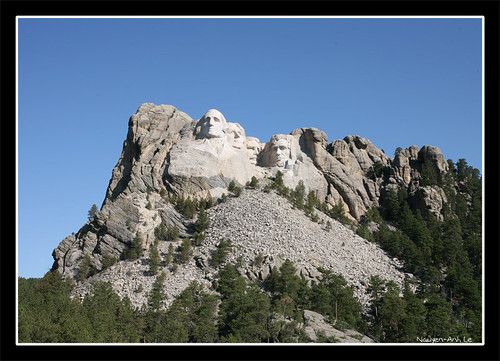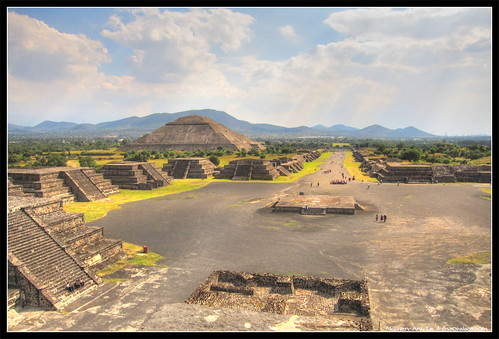When you think of Egypt, you almost always think of the Pyramids as well. It's hard to believe the Egyptians built them almost 5000 years ago - way before the existence of the Babylonians, Chinese, Greeks, Persians, and other mighty civilizations. Out of the original seven ancient wonders of the world, the Pyramids are the only ones still standing.
Exactly how many pyramids did the ancient Egyptians build? I knew of the Great Pyramid, and I knew that they built more than one. More than that, I did not know hehehe. Here's a great article by National Geographic that explains the pyramids in detail. Sounds like the Egyptians built eight big ones. Most of them are located on the west bank of the Nile, just southwest of Cairo. I was fortunate enough to visit six of them. I'll write about the pyramids in the order in which they were built.
My G Adventures tour itinerary only included visiting the pyramids at Giza. I visited Saqqara and Dahshur (and Memphis) on my own, before the tour started. I think it was worth it to have seen all these pyramids.
The Step Pyramid at Saqqara
Before pyramids, the ancient Egyptians built mastabas to bury dead Pharaohs. Mastabas are single-story, flat-roofed tombs. I bet they'd looked like dull warehouse buildings like Costco or Home Depot. Around 2600 BCE, however, the Pharoah Djoser somehow got the idea of adding more levels to the tomb. He and his architect buddy Imhotep (ya know, the typical technical genius behind the great leader) worked it out and built the Step Pyramid.
The Step Pyramid is located in Saqqara. It's part of a large temple complex, with a bunch of other tombs. The Step Pyramid is currently being renovated, so I could not enter. However, I was able to enter one of the smaller tombs in the temple complex. These tombs are dark and dreary - only a dead person would want to be inside...
The Bent Pyramid at Dahshur
A few Pharoahs later, it was determined that a step-shaped monument wasn't good enough for a Pharaoh entering the Afterlife. Pharaoh Snefru thus commissioned the building of the first smooth-sided pyramid. What a genius idea!
It seems that building a pyramid for the first time in history was a bit of a challenge. Apparently, the angle of the pyramid was too steep. Perhaps it would have gotten too high to build, or it would have become too unstable, who knows. They reduced the angle halfway through the construction. Whatever the problem was, it was a big Homer Simpson "D'oh!!!!" moment. I would call it an ancient equivalent to the Leaning Tower of Pisa. So instead of calling this pyramid "The Marvelous Pyramid of Snefru," we refer to it as the "Bent Pyramid."
Luckily for Snefru, he was still alive, and the gods weren't too angry at his engineering blunder. As the saying goes, "if you don't succeed, try and try again." Snefru commissioned the building of another pyramid (monument #3 for him), just over the next sand dune in Dahshur. This pyramid, known as the Red Pyramid, is the first true pyramid ever built.
Both pyramids at Dahshur are nice to visit because there aren't nearly as many tourists as Giza. You can easily walk right on in. For the Red Pyramid, you climb steps about halfway up the pyramid. Then you descend down a very low ramp to the base of the pyramid. It's actually a little tiring. The tomb is a dark, tiny little room, about the size of a small bedroom, with an A-shaped ceiling. Unfortunately, my pics of the tomb were too blurry. It kinda looks like the tomb in the Step Pyramid, but more narrow.
The Great Pyramid of Khufu at Giza
The main pyramid attractions are at Giza. The pyramids shown in the photo above are the Great Pyramid, the Pyramid of Khafre, and the Pyramid of Menkaure.
I'm told that Giza is usually packed with tourists. Usually people recommend going very early in the morning, to avoid the crowds. Luckily for us, many tourists were afraid of the protests in Cairo or something. We visited Giza in the afternoon and hardly faced any crowds.
The Pharaoh Khufu, son of Snefru, decided to outclass his father. The commissioned the building of the Great Pyramid. It is the largest pyramid in the world. Unfortunately you can't go inside anymore. But standing in front of this colossal monument is an experience in itself. It was actually hard to get a good photo of the pyramid, because you have to step back so far to fit it all in the frame.
The Pyramid of Khafre
Khafre succeeded his father Khufu as Pharaoh. This pharaoh, however, chose not to outdo his father. He built this pyramid next to the Great Pyramid. Although Khafre's pyramid is shorter, it was built on higher elevation. Thus it actually looks taller than the Great Pyramid. How's that for sneakiness? Khafre probably laughed about it all the way to his grave (pun intended)....
One neat thing about the Pyramid of Khafre is that part of its smooth outer casing - at the top - is still intact. The casing at the bottom has worn away. The entire casing of the Great Pyramid has worn away too.
The Sphinx
Khafre didn't only build a pyramid; he expanded the pyramid complex at Giza. He built courtyards, temples, statues, etc. Most of it has worn away, unfortunately. But one highlight that still stands is the Sphinx. A sphinx is a mythical creature that has the body of a lion and the head of a human. The carving is quite impressive! It's kinda like a 5000-year-old version of Mt. Rushmore... Tourist tip: the Sphinx is great for taking silly photos :)
Conclusion
Pyramids are pretty darn amazing. I can't believe they built these things almost 5000 years ago. What's also amazing is that other civilizations have built great pyramids as well - almost independently of each other. Here's a pic of the pyramids at Teotihuacan, near Mexico City. You can also find pyramids built by the Mayans, Incans, Chinese.... there are pyramids even in Bosnia and Russia! I am convinced that aliens came and designed all of these pyramids around the world....
Related links:
- Egypt & Jordan trip overview
- All articles from this trip (in reverse order)
- Slideshow of photos on Flickr
- Photo album on Flickr
- Egypt photos on Facebook (FB friends only)
- Jordan photos on Facebook (FB friends only)



















No comments:
Post a Comment